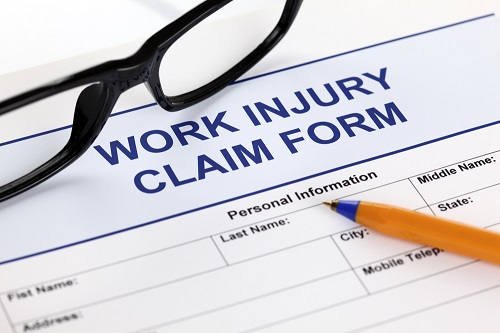
7 Common Workers Compensation Claim Injuries
On-the-job injuries can happen at any time in any industry, causing harm to both employees and employers. In fact, private industry employers reported 2.9 million nonfatal workplace injuries and illnesses in 2016, according to the U.S. Bureau of Labor Statistics’ most current data. That equates to 2.9 cases per 100 full-time workers in the U.S.
When an injury occurs, workers’ compensation insurance is available to help employees receive proper medical care and take the time off they need to recover. There are many types of injuries and illnesses that can result in a workers’ compensation claim. Here are some of the most common injuries, based on EMPLOYERS® claim data:
Lacerations
Deep cuts or tears in skin or flesh. Laceration injuries can occur in virtually any industry, but are common in manufacturing, machine shops, food production and restaurants. Often, lacerations happen when workers rush to finish a job, lose concentration or don’t wear the proper safety gear, such as cut-proof gloves. To help avoid lacerations, employees should be advised to keep work areas tidy and never leave equipment or tools unattended. Business owners should help educate employees on wearing the most appropriate safety gear for their job description. If an employee uses a knife or blade for work tasks, business owners should also replace dull blades, when necessary, to help curb potential injuries.
Sprains and strains
Sprains are stretched or torn ligaments, while strains are stretched or torn muscles and tendons. Any type of falling, twisting and pulling can cause sprain or strain injuries. In the workplace, improper lifting or ergonomics are often the causes of these types of injuries. To help keep your employees safe from sprains and strains, familiarize yourself and your employees with the U.S. Occupational Safety & Health Administration (OSHA) lifting guidelines and ergonomics guidelines.
Contusions
Bruises, or marks on the skin caused by blood trapped under the surface that crushes small blood vessels but does not open the skin. In the workplace, this type of injury usually happens when employees drop objects due to improper lifting or when they run into things. Business owners should conduct regular trainings to review proper ergonomics and environmental awareness, which can usually prevent these sorts of injuries. Employees should properly assess the weight of an object or piece of equipment when attempting to move it, and be aware of their surroundings at all times. Machine guarding and lockout-tagout procedures are also a helpful practice that can help prevent these injuries.
Burns
Injuries to tissues caused by heat, chemicals, electricity, steam, sunlight or radiation. Burn injuries are common in restaurants, as well as manufacturing and production, particularly when heat sources, acids or bases are part of the manufacturing process. Burns can also occur internally through inhaling smoke or chemical fumes. Employers should promote proper respect for heat sources and storage of chemicals with their employees. Since burn injuries can vary, employers should conduct regular trainings with employees on the protocols that exist for treating chemical, electrical, thermal and sun exposure burns.
Eye Injuries
Eye and face protection must be provided whenever necessary to protect against chemical, environmental, and radiological hazards or mechanical irritants.
Ensuring worker safety includes conducting a workplace hazard assessment and providing adequate training for all workers who require eye and face protection. When employees are trained to work safely, through the following requirements, they should be able to anticipate and avoid injury from job related hazards.
Fractures
Breaks in the bone of any degree due to forced trauma or overuse. These types of injuries are most common in jobs involving manual labor and exposure to heavy equipment and machines. However, fracture injuries can still occur anywhere. Proper training and ergonomics can help prevent these sorts of injuries. In an environment where moving heavy equipment is common, increased supervision or spotting by other workers is another preventative measure.
Cumulative or Continuous Trauma
A catch-all phrase used usually to describe the degradation of a body part, joints, muscles or tendons as a result of a repeated task over a long period of time. These injuries are most common in workers that have decades-long careers in manual labor positions. Proper training and recovery between injuries can be instrumental in preventing this type of trauma.
A workers’ compensation insurance policy protects employees by covering the cost of medical expenses, rehabilitation costs and lost wages for those who suffer a work-related injury or illness. It also provides benefits to families of employees who die from work-related injuries or illnesses. In addition, your carrier should also provide value added loss control services that will help you to build an overall culture of safety and reduce workplace injuries and illnesses.
EMPLOYERS is committed to helping small businesses operate safer, more efficient work places. Contact EMPLOYERS® today to learn more about our cost-effective workers’ compensation insurance.
